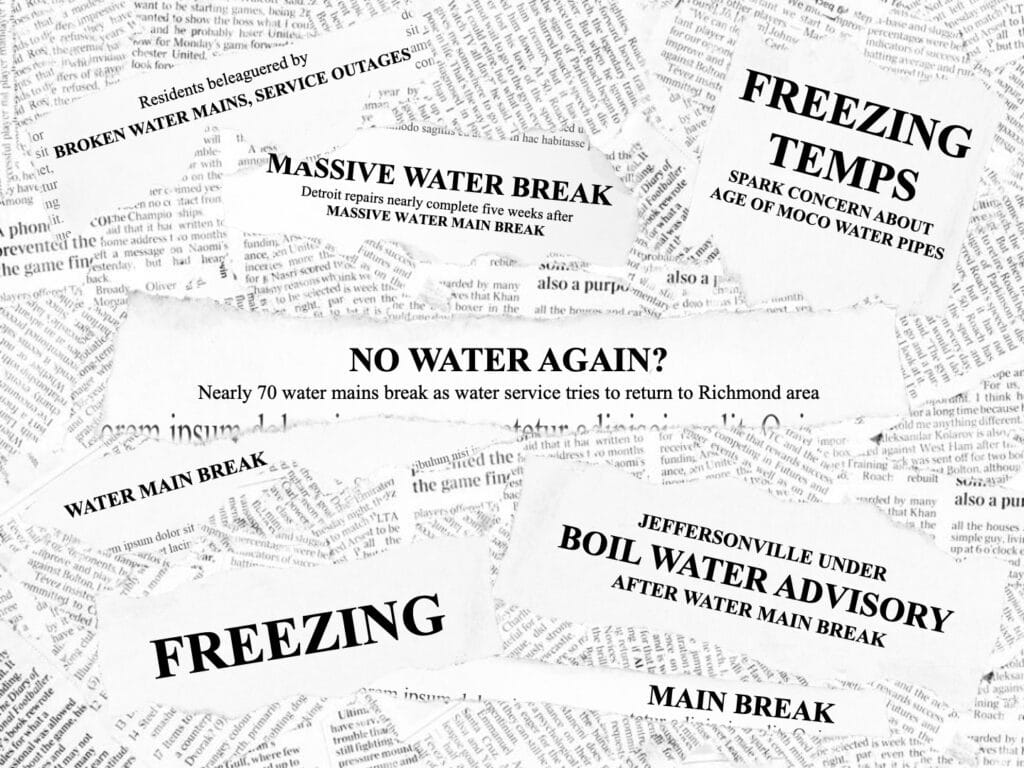Why water main risk management matters now
Aging infrastructure, limited funding, and increasing water main breaks are putting pressure on utilities like never before. But with the right data and risk management strategies, you can stay ahead of failures, protect public health, and optimize your budget.

Challenges in water main risk management

Aging infrastructure
Many water systems are decades past their intended lifespan, increasing the likelihood of failure. It’s estimated that 33% of water mains in the U.S. and Canada, constituting approximately 770,000 miles, are more than 50 years old.

Aging workforce
A retiring workforce means less institutional knowledge, making it even harder to maintain and predict failures.

Limited understanding of risk
Gathering accurate data on underground pipes is tough, especially when shifting weather patterns and soil conditions play a role. Without insight, risk assessment is a guessing game.

High replacement costs
Replacing every at-risk main isn’t feasible. With an estimated cost to replace aging water mains in the U.S. and Canada at approximately $452 billion, cities must prioritize wisely.

Reactive repairs are expensive
Emergency fixes cost far more than proactive replacements, leading to budget strain and service disruptions.

Public health risks
Failing pipes can contaminate drinking water, increasing the risk of dangerous exposure.
Why proactive risk management matters
Instead of scrambling to fix broken mains, cities can stay ahead of failures with a data-driven, proactive approach.

Cost savings
Identifying high-risk areas early helps cut emergency repair costs and redirect funds toward long-term infrastructure upgrades.

Better system reliability
Replacing vulnerable pipes before they fail keeps water flowing, reduces disruptions, and prevents damage to roads and property.

Safer communities
A stable water system protects against contamination and unexpected outages, ensuring clean water access for everyone.
The cost of ignoring water main risks
Neglecting risk management can have real and devastating consequences.
Just look at these recent headlines:

Ignoring aging infrastructure isn’t an option—cities need proactive strategies to protect their communities, budgets, and water supply.
BlueConduit is here to help!
Prevent water main failures before they happen
Watch our on-demand webinar to explore data-driven approaches that help municipalities predict, plan, and prevent costly water main failures.

